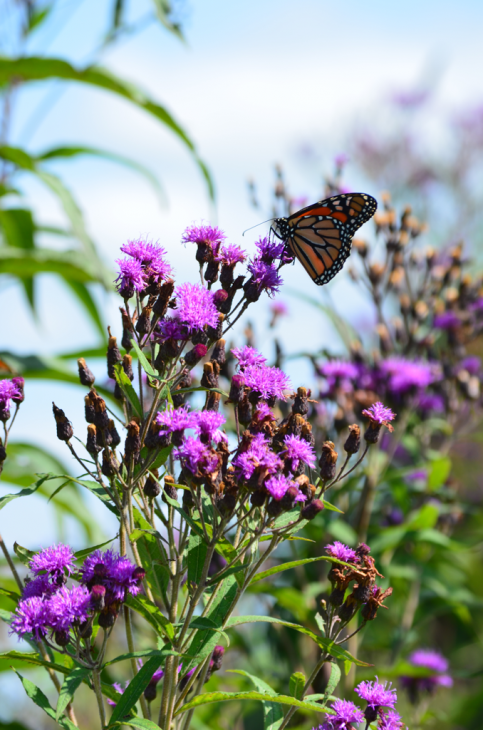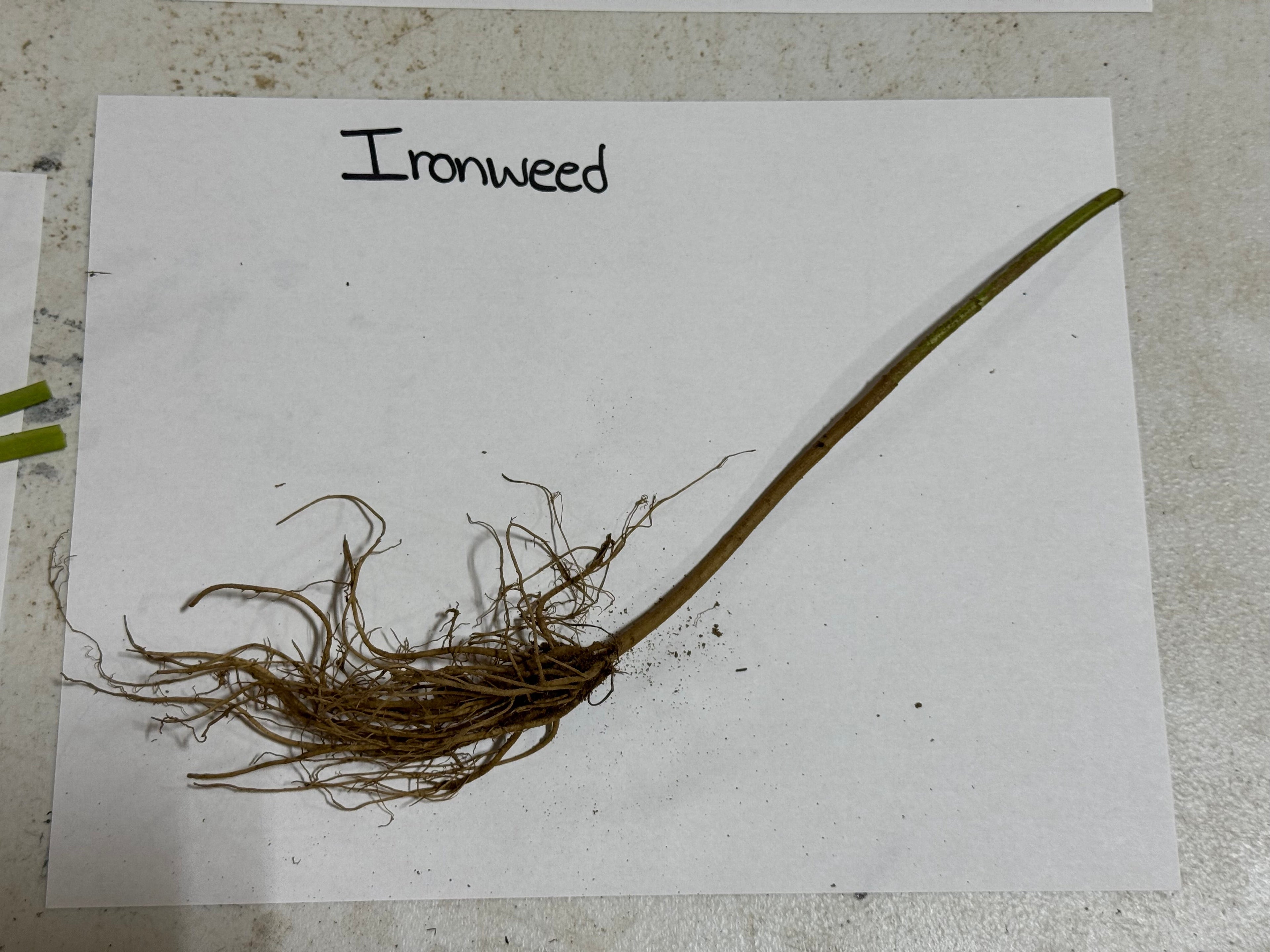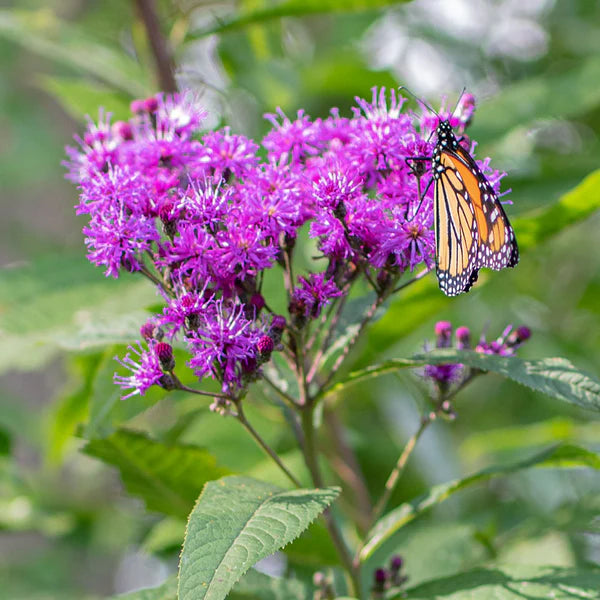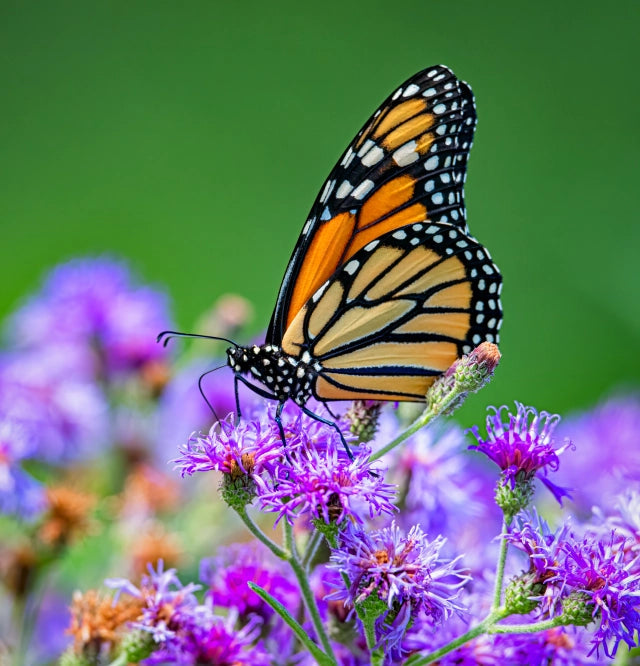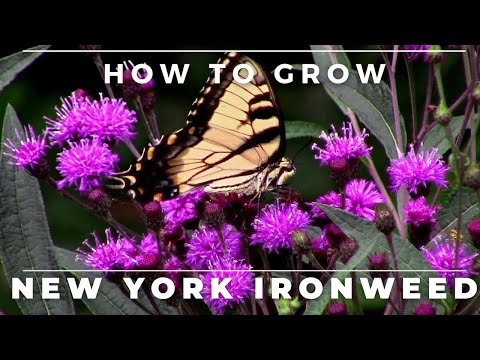Ironweed Plant for Sale
The Ironweed perennial (Vernonia Plant) gets its name from its tough stem, stuck deep in the ground and rising straight up like an iron pole. The sturdy plants can grow from three feet tall up to seven feet tall, depending on the variety.
This adds stunning visual interest to your garden with its skyscraping blossoms. It is native to the Great Lakes region of the United States and Canada, and its resiliency makes it a fantastic addition to any native or wildflower garden.
Ironweed Plant Details
Family: Asteraceae
Light Requirement: Full Sun, Partial Shade
Height: 3-7 ft
Spread: 1-3 ft
Growth Rate: Rapid
Soil Preference: Moist, Flood-tolerant
Bloom Time: Late summer
Flower Color: Purple
Wildlife Value: Butterflies, Pollinators
Notable Characteristics of Purple Ironweed Plant
The Ironweed Plant has a thick, twig-like stem and thin brown branches. Its long, thin, pointed leaves grow in pairs all the way up the plant to the blossom. The flower has short, fluffy petals that stick straight up out of the plant, making a purple, moss-like carpet on the top of the plant.
It blooms in the late summer, and its hardy blooms last for six weeks or more. It crops up near streams, open woodlands, and meadows, or even in disturbed land, given its resilient nature.
Landscape and Maintenance of Ironweed Plant
This beautiful and hardy plant grows easily in many climatic environments and is even flood-tolerant, but prefers full sun and moist soil. It is an aggressive self-seeder and spreads rapidly. The Ironweed Plant also attracts a variety of native bees and butterflies, which help to pollinate.
It actually is the host plant for the larvae of the American Painted Lady butterfly and the Ironweed Borer Moth. It contributes to the native plant kingdom and naturalizes easily while also being an eye-catching beauty. It is the perfect way to decorate your native or wildflower garden.
Exposure
It blossoms in complete sun to partial shade and prefers at least 4-6 hours of sunlight per day for optimal growth and abundant flowering, although it may also grow in shadier spots.
Height at Maturity
Over 12"
Usage
Pollinator Plant
Shipped As
Bare-root
Ships
USPS
Planting Zones
3-9
